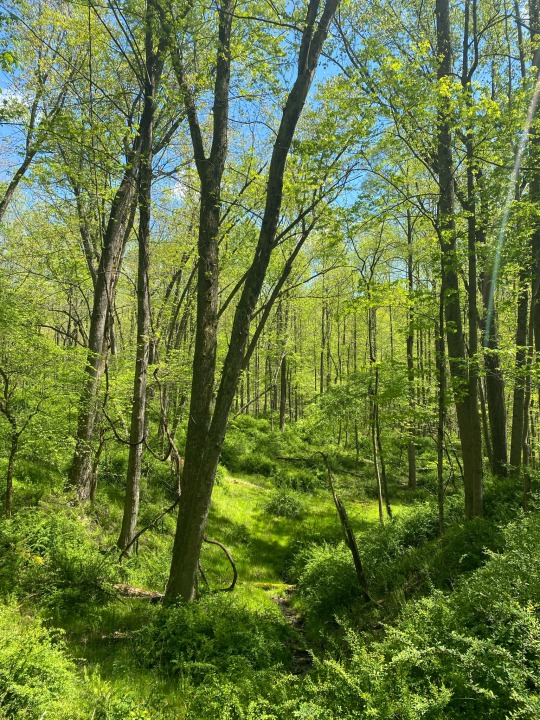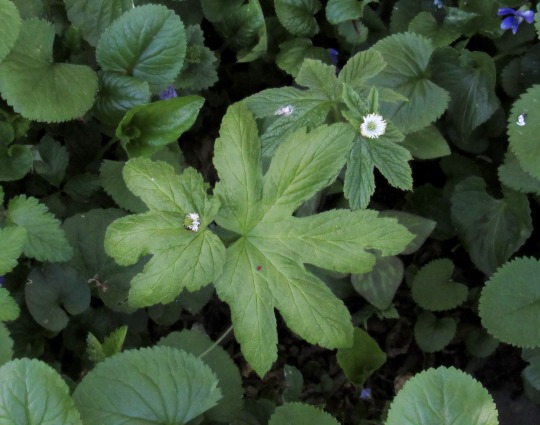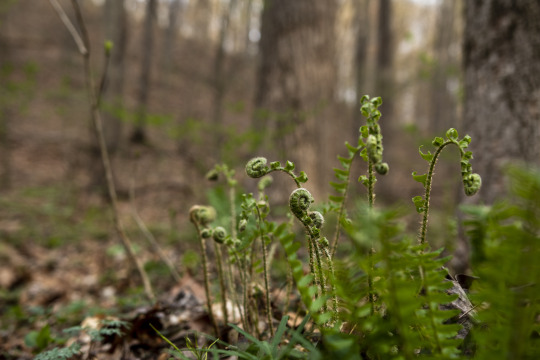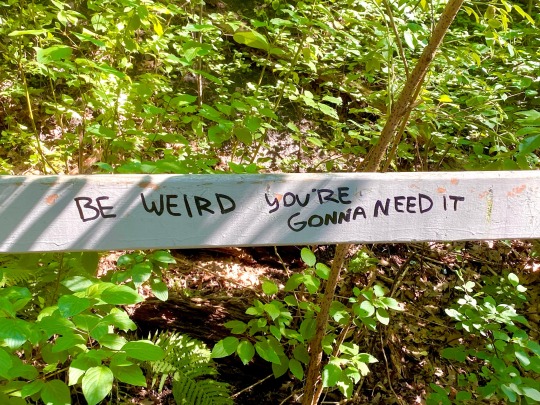Text

Finally warm enough to inspire the Planting Urge :)
3 notes
·
View notes
Text


The woods near my new place are loaded with wild ginger (Asarum canadense), and I'm obsessed. Look at these funky little flowers.
(4/2024)
45 notes
·
View notes
Text
dichotomous plants are so weird man. like they’re not even weird it’s the becoming the dichotomous that’s weird. i went to a talk once about a population of strawberries that were accidentally slowly becoming dichotomous and they didn’t even have sex chromosomes, like they had like a bunch of genes across a bunch of chromosomes that did a little bit of sex but not a lot and it added up to one whole sex kind of but not enough that they had all collectively decided to be one sex or the other, so there was still like, a sizable chunk of the population that was producing flowers of both sexes. like they were microdosing it. taking the sex genes for a spin in the strawberry patch
917 notes
·
View notes
Text
asking people at the bar if they know what a lichen is and it’s. a little guy on avwrage
441 notes
·
View notes
Text
I watch a ton of great youtube videos about halting and reversing desertification but now youtube recommends me a ton of videos of people using those techniques to turn desert ecosystems into farmland.
If you see these too, please downvote them. Going to desert ecosystems and planting food forests is not a trend we should be starting. Many plants and animals are endemic to those areas and those ecosystems are worth protecting. Deserts are not wastelands.
These videos mislead people into thinking that this is a good thing for the environment just because there is more green. Nothing could be further from the truth. There are so many actual forest ecosystems that need to be restored, we should not be wasting energy foresting deserts that have been deserts for millennia.
3K notes
·
View notes
Photo

Wildflowers in bloom. Mount Rainier National Park.
35K notes
·
View notes
Text
Plants actually move around a lot in 24 hours, they just do it very slowly | source
5K notes
·
View notes
Text
Girls will be like “oh I’m just running quick some errands” and then spend all day in the wetlands appreciating the unique flora and fauna
10K notes
·
View notes
Text
Brief Book Review - Crossings by Ben Goldfarb
April 22 2024

Excellent read but hard to get through. Worth it.
This book is a lot of things. Beautifully written, endless stories and research and interviews with interesting people, there's some hope and many people working hard for good things, but damn is it also extremely upsetting for those of us with soft hearts. Radicalizing.
You're going to read/hear a lot about animal death in this book, about all the different ways that beautiful animals all across the planet are dying due to roads. From vehicles killing them outright, to animals refusing to cross the roads due to the perceived danger and then starving to death or dying out b/c of lack of access to mates, to pollution from cars/road salt, to poorly designed culverts preventing fish migrations, to how human health and lifespans are negatively impacted and how redlining in US cities hurt black communities.
This is a hard read and I wept, but I'm glad I managed to get through it. There's a lot of solid history/info in here about roads and how people first reacted to cars in the US, how cars brought travel to the middle classes and not just the rich, how much the US forest service was in bed with the logging industry and why the national forests are waayyyyy more fucked and damaged than one might think, how animal rehabbers in Tazmania work so hard to save animals, the dramatic road expansions going on in Brasil, from Alaska to Oakland CA to Minnesota to Florida to the UK a lot of terrain and a lot of animals are covered here.
And basically the issue is that different kinds of animals have different needs, so the best ways to help them survive being near roads vary and tend to be expensive, in an area of gov't that doesn't have much public attention or a big budget and generally has been deferring basic maintenance due to that (and therefore isn't really open to things like wildlife crossings - but well designed they save TONS of animal lives).
The mere existence of a road decreases the chances of individual and species survival. Roads decrease biodiversity and can lead species to extinction. The best thing we can do is actually to stop building them, but since that isn't realistic, the second best thing we can do is to pay attention to road ecologists and indigenous peoples to help design infrastructure that will better help the animals survive the onslaught of death that roads bring.
(this is as brief as I can make it! this book covers a LOT of territory)
54 notes
·
View notes










